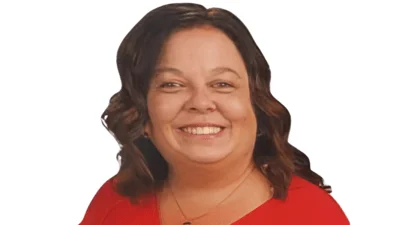SSM Health Good Samaritan Hospital - Mt. Vernon issued the following announcement on Sept. 17.
A growing number of health systems are rolling out home-based palliative care programs in an attempt to close post-acute care gaps. SSM Health, Allina Health and Sentara Healthcare are just a few examples.
While executives say the programs are key to lowering costs and driving patients to the right type of care sooner — such as home health — reimbursement currently stands in the way of broader adoption.
“We’re at a crossroads,” Robert Pritts, president of SSM Health at Home, told Home Health Care News. “What [will] help drive this ‘gap care’ is the movement toward value-based purchasing and population health.”
SSM Health
St. Louis, Missouri-based SSM Health is a health system with $7.4 billion in total revenues and operations in four states: Missouri, Wisconsin, Oklahoma and Illinois.
SSM also offers post-acute services across that geography, with a sizable home-based care division, SSM Health at Home, which provided more than 315,000 home care visits in 2018 alone, according to SSM.
While home health and hospice services are both set to grow at SSM in the years to come, Pritts says at-home palliative care will be the biggest growth area for his division going forward.
“Palliative care … is that gap care that’s in between home health and hospice for chronic care patients,” he said. “Can we deliver [palliative services] out of home health? Yes, as long as the patients fit that description, but not everybody’s going to be home-bound.”
By Pritts’s defintion, gap care gives those with chronic conditions additional oversight to ensure they remain healthy and compliant with care. It includes touch points with medical professionals, either in-home or using telehealth, to get ahead of medical problems before they arise.
In addition to keeping patients healthier, it also helps prevent the high costs associated with hospital admissions and emergency department visits.
“It does not generate an excessive amount of revenue,” Pritts said. “Under fee-for service, everybody’s looking for a return on investment. But what this does is reduce the need for having somebody go in [the hospital]. … That’s why everybody’s starting to look at it under value-based [purchasing] — because it’s all about that medical spend.”
Currently, SSM is testing a home-based palliative gap care program in its Wisconsin market through Dean Health Plan, a member of SSM Health, and its value-based integrated delivery network (IDN).
“We do a lot [of] work with hospice and home health, and we’re starting to get into what they consider to be transitional care, which is nurse practitioners that are actually able to look at what’s going on in the home,” Pritts said. “We literally hired a chief medical officer for palliative care in Wisconsin, who [is helping to] develop the whole entire gap program.”
While the home-based palliative care program isn’t exactly home health, hospice or home care, it can often lead to those services.
“It [reaches] those chronic care patients very, very early in their care,” Pritts said. “As their conditions change, they are able to be either placed in home health or hospice earlier, so they’re on the right level of care. … The program helps dictate where this patient goes in that overall continuum based upon how the patient performs in the home.”
Because the program is in its early stages, SSM did not have results it could share with HHCN.
When asked if SSM will roll the program out to broader geographies, Pritts said the timing would depend on reimbursement, as value-based purchasing is the best way to make programs like this work.
“Because of value-based purchasing that is already in place in Wisconsin, they are the perfect world to try this type of programing,” Pritts said. “I would anticipate as we start seeing a transition more toward population health and value-based purchasing … instituting [the trial elsewhere] will just be a matter of … plugging it in and having it tweaked.”
Allina Health
Compared to SSM, Minneapolis, Minnesota-based Allina Health’s community-based palliative care program is a little more developed.
Currently, it has about 120 patients on census and can bill for the services through three different payers — and hopefully more next year, according to Julia Crist, vice president of operations for home and community services at Allina.
“[Payers] don’t always understand the benefits that community-based palliative care can offer,” Crist told HHCN. “We’ve been working through that for the past year. After we get on the same page about how the program performs for beneficiaries, we have been successful in getting more and more contracts to cover it. It’s still an emerging field — and then partnering it together with Medicare Advantage emerging … we see this as a growth area.”
As a health system, Allina serves patients in Minnesota and Wisconsin. It had an annual net operating revenue of $4.32 billion in 2018.
Its post-acute services arm spans most of its coverage area and includes home health, hospice, palliative care and durable medical equipment. In 2018, the Allina performed more than 225,000 home health visits total.
Allina’s in-home palliative care program is available to medically complex patients who are beneficiaries of the three payers contracted to cover the services. The goal is to reduce spend for those patients while putting their needs and wishes at the center of their care.
“We have identified patients who qualify for community-based palliative care using an algorithm that we’ve built,” Crist said. “That’s been really successful in finding the right complexity of patient and, then, also identifying which patients have the payer benefits so we know who we can offer it to.”
An interdisciplinary team of nurses, social workers, pharmacists, chaplins and other care professionals are then assigned to participating patients to help address medical, social and familial issues. Typical engagement is 16 to 18 months, Crist said.
“They spend most of their time assisting in care transitions and guiding end of life preferences,” Crist said. “We spend [different amounts of] time with patients dependending on the their needs.”
Allina’s algorithm identifies patients who would otherwise fall into the highest spending buckets, Crist said. The program has helped cut ED visits for participants by about 16% to 44% on average and cut in-patient hospital says by 21% to 27% on average, she touted.
“We would like to get additional contracts with payers to be able to offer the service to a broader swath of our Allina health patients,” she said. “We are wanting to grow the program. We know that right now we are understaffed to meet the demand, and that’s because we don’t have the reimbursement for it.”
Sentara Healthcare
Like Allina, Sentara Healthcare’s new home-based palliative care program also uses predictive analytics to identify patients whose outcomes it could improve and whose costs it could cut.
Norfolk, Virginia-based Sentara Healthcare is a health system with $6 billion in total operating revenue. It operates 11 hospitals in Virginia and one in North Carolina.
Its home health arm — which falls under the Sentara Enterprises division — spans most of that geography. Generally, about 17% of Sentara’s discharges go to its internal home health line. In 2018, about 40,000 patients in total received Sentara’s home health services.
Sentara recently teamed up with Philadelphia, Pennsylvania-based Turn-Key Health to roll out its new illness services program, which is designed to identify high-risk patients to whom it then offers additional services and supports to keep healthy.
“[If] the member would benefit from having home health or DME or … or if they’re experiencing social isolation and they don’t have caregiver support [or] a way to consistently get meals, we’ll be arranging for meal delivery,” Turn-Key President Greer Myers previously told HHCN. “We’ll be arranging for social integration and all of the things that may be untouched by their programs.”
The advanced illness program is available through Setara’s partnership with Optima Health Plan, which has about 450,000 members. Turn-Key then uses Optima claims data to determine which members are high-risk and should be invited to participate in the added benefit.
“The health plans are paying for service because, really, what it’s doing is tackling one of their biggest quality problems and their biggest cost issues,” Myers said. “They don’t have a good way to solve for that problem.”
Original source can be found here.





 Alerts Sign-up
Alerts Sign-up